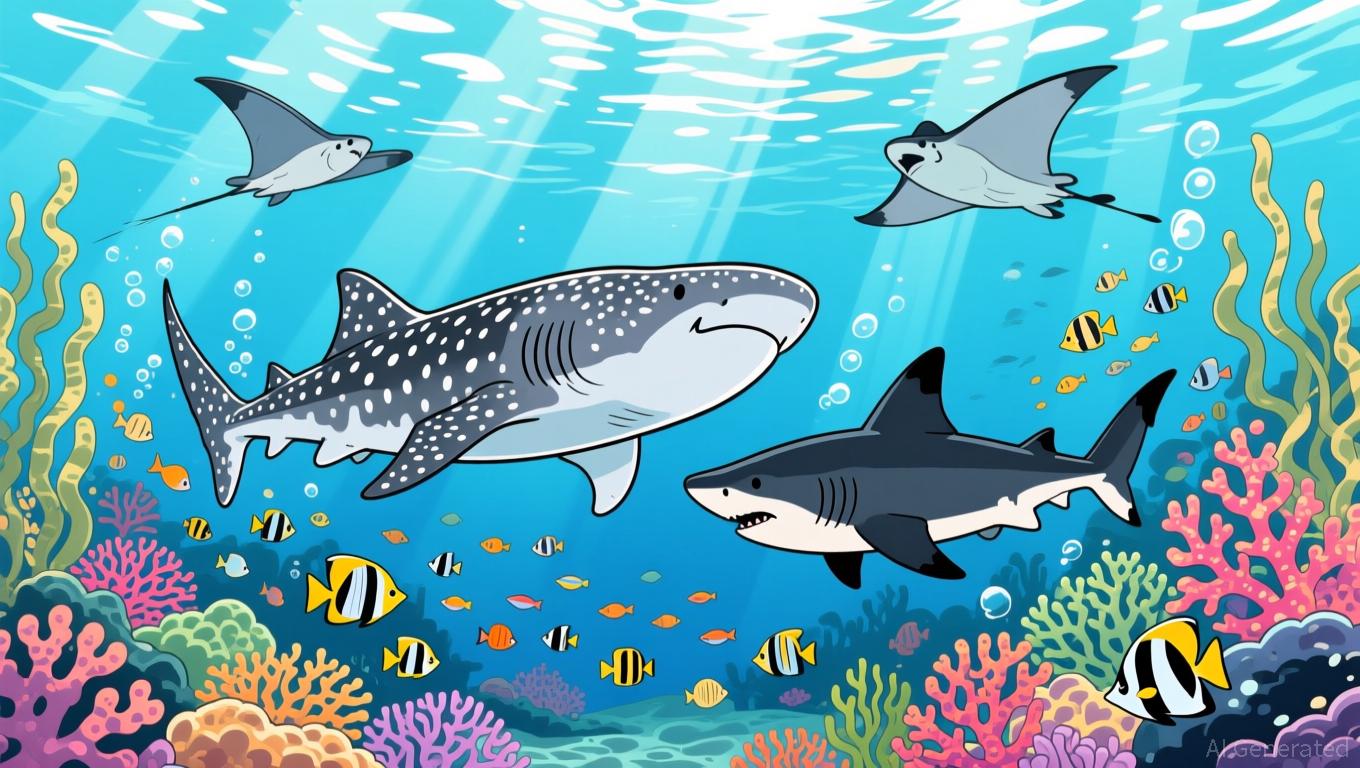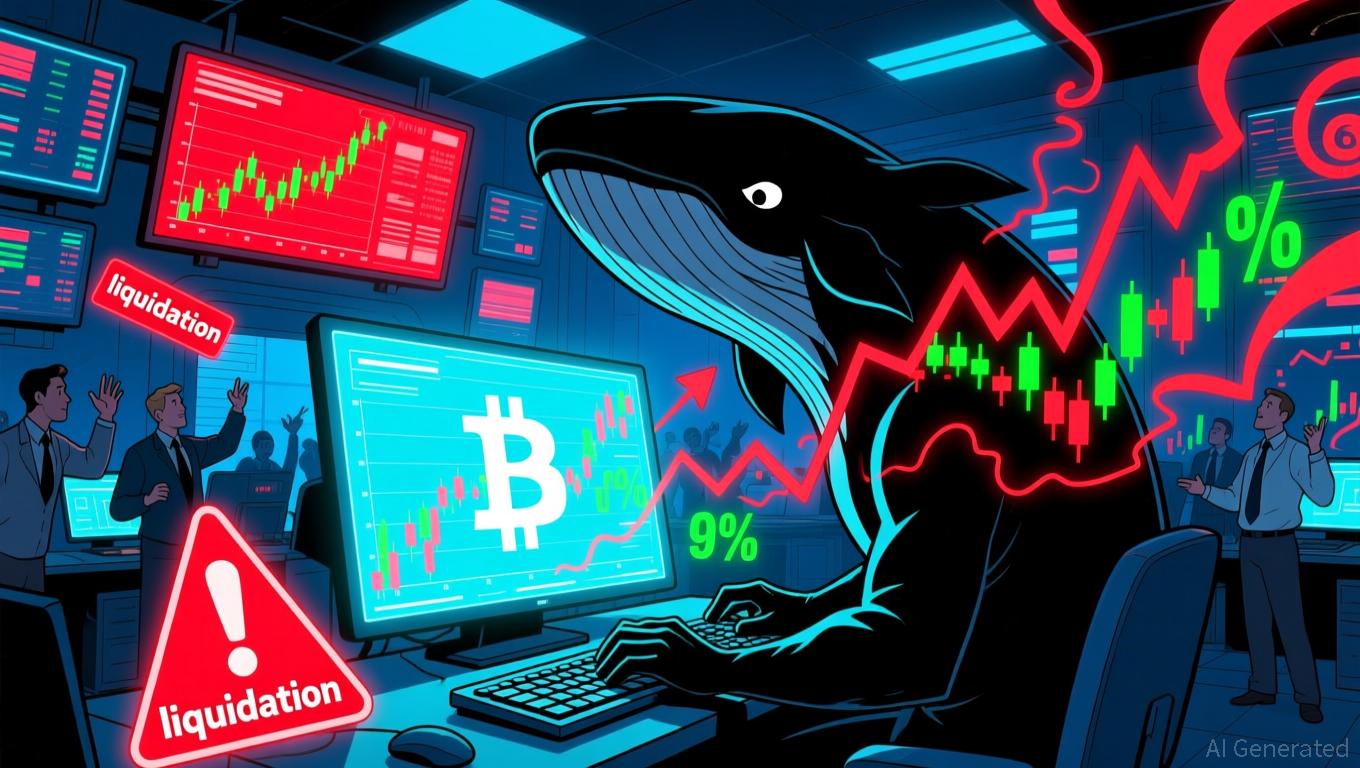CITES and Instant DNA Technology Aim to Uncover Covert Shark Trade and Prevent Species Disappearance
- CITES CoP20 in Uzbekistan proposes historic protections for 12 shark/ray species via Appendix I listings and stricter Appendix II monitoring. - Genetic testing reveals illegal shark trade volumes exceed official records by 10-70x, with Hong Kong as a key trafficking hub despite zero-export claims. - Portable DNA tools now enable real-time identification of 38 CITES-listed species, aiding enforcement in Indonesia, Ecuador, and other source countries. - Experts stress CITES is critical to prevent extinctio
At the 20th Conference of the Parties to the Convention on International Trade in Endangered Species (CITES CoP20), held in Samarkand, Uzbekistan, government representatives are at a crucial crossroads to prevent the disappearance of whale sharks, manta rays, and other highly threatened marine animals. Currently, more than 37% of shark and ray species are at risk of extinction, with pelagic shark numbers having dropped by over 70% in the past five decades and

The measures being discussed at CoP20—with backing from over 50 nations—would provide the most extensive protections for sharks and rays ever seen under CITES. These proposals include moving the oceanic whitetip shark, all manta and devil rays, and whale sharks to Appendix I, effectively banning international commercial trade. Zero export quotas are suggested for wedgefish and giant guitarfish, while species such as gulper sharks and smoothhound sharks would be added to Appendix II, requiring tighter oversight
The need for immediate action is highlighted by a recent Science Advances study, which discovered that fins from species listed under CITES, such as oceanic whitetip and hammerhead sharks, are found in markets at rates 10 to 70 times higher than what is officially reported. For instance, 81% of countries exporting shark fins claimed no exports of threatened species, even though DNA evidence traced the fins back to their waters. Hong Kong continues to be a major trade center, with many source countries failing to report the quantities uncovered by genetic testing.
To address this, marine biologist Diego Cardeñosa from Florida International University has created a portable DNA testing device that can instantly identify protected shark and ray species. The tool, tested on 55 species—including 38 listed by CITES—can detect unknown species and provide immediate proof for authorities. Cardeñosa points out that without fast identification methods, illegal shipments often go unnoticed, weakening global conservation efforts. The technology, which can also be used for turtles and mammals, is now being used in countries such as Indonesia and Ecuador to help stop trafficking.
Luke Warwick, who leads the Wildlife Conservation Society's (WCS) shark and ray initiative, emphasized that "CITES remains the most powerful international mechanism to ensure that wildlife trade does not push species to extinction." Dr. Susan Lieberman of WCS further noted that the proposed listings "align CITES with other international commitments and clearly demonstrate the global intent to safeguard these species before it is too late"
The outcomes of CoP20 may decide the fate of these vital species. As top predators and key ecosystem engineers, sharks and rays are essential for maintaining marine biodiversity and the stability of fisheries.
Disclaimer: The content of this article solely reflects the author's opinion and does not represent the platform in any capacity. This article is not intended to serve as a reference for making investment decisions.
You may also like
Bitcoin News Update: Major Whale Places $87 Million 3x Leveraged Bet Opposing BTC Surge Amid Divided Market
- A Hyperliquid whale opened a $87.58M 3x BTC short, contrasting with bullish market trends and other traders' strategies. - Another 20x $131M short faces liquidation risk if BTC surpasses $111,770, while $343.89M in 24-hour liquidations highlight short-position vulnerability. - Technical indicators (RSI 66, 15/1 buy/sell signals) and institutional BTC purchases support upward momentum despite liquidity risks on Hyperliquid. - Diverging whale strategies and macro factors like Fed policy underscore crypto's

Ethereum News Update: Major Institutions View Ethereum as a Key Asset, Outpacing ETF Investments
- 68 publicly traded firms now hold 12.7 million ETH, surpassing all Ethereum spot ETFs' 11.3 million holdings as of July 2024. - Firms like Coinbase and Gemini lead corporate accumulation, while banks like Fidelity expand crypto custody services for institutional clients. - Analysts cite regulatory clarity and improved risk frameworks as drivers, with 72% of institutional investors boosting crypto allocations in 2024. - Critics warn of market manipulation risks as corporate holdings now control 54% of ins
Breet's Enhancement Addresses Africa's Cryptocurrency Instability and Delayed Transactions
- Breet 3.0 Pro Max upgrades Africa's OTC crypto platform with USD wallets, instant transfers, and flat fees to combat volatility and slow settlements. - Key features include stable dollar holdings, peer-to-peer transfers bypassing banks , and automated issue resolution to reduce transaction friction. - Business tools now offer multi-currency templates, VIP tiers for high-volume traders, and security dashboards tracking account activity. - The update addresses Africa's crypto challenges by stabilizing purc

DeFi's Automation Shortfall Addressed: Orbs Introduces dSLTP to Achieve CeFi-Grade Risk Control
- Orbs launches dSLTP, a decentralized stop-loss/take-profit protocol for DEXs, bridging CeFi automation with DeFi. - The protocol automates risk management via on-chain orders, reducing real-time monitoring needs during volatility. - Built on Orbs' Layer-3 infrastructure, it enhances DEX functionality with CeFi-grade tools while maintaining decentralization. - This innovation addresses DeFi's automation gap, potentially driving DEX adoption and institutional-grade on-chain trading.
